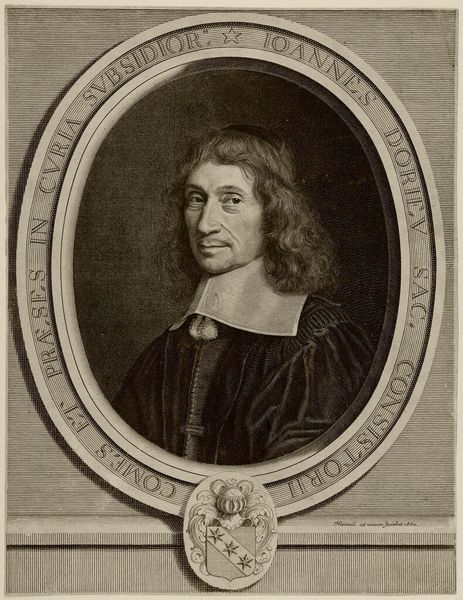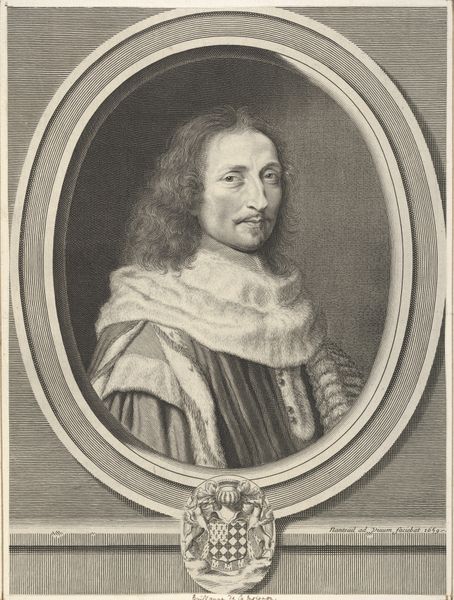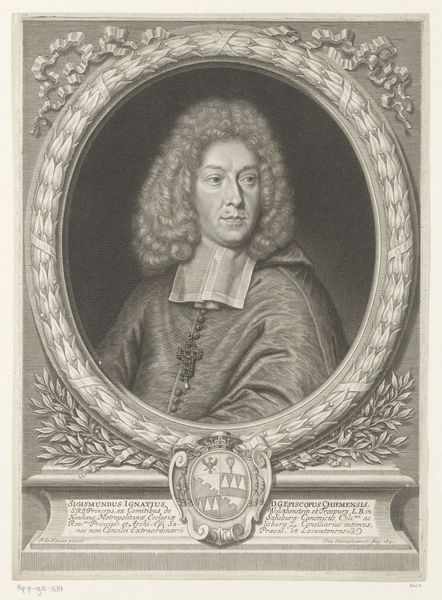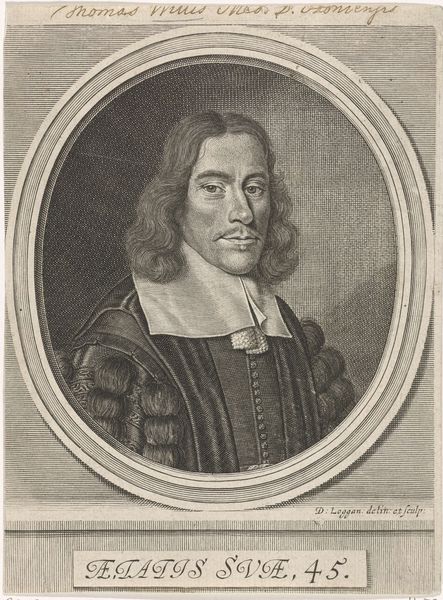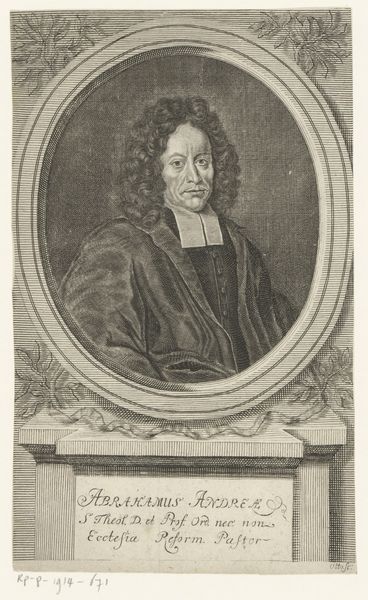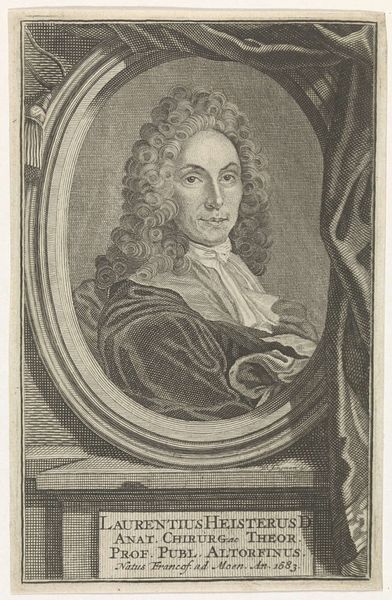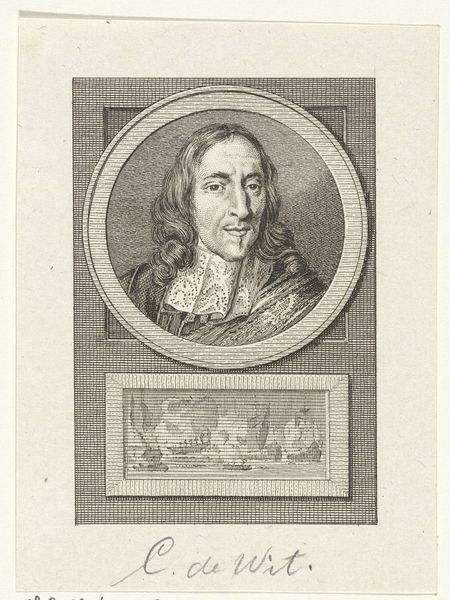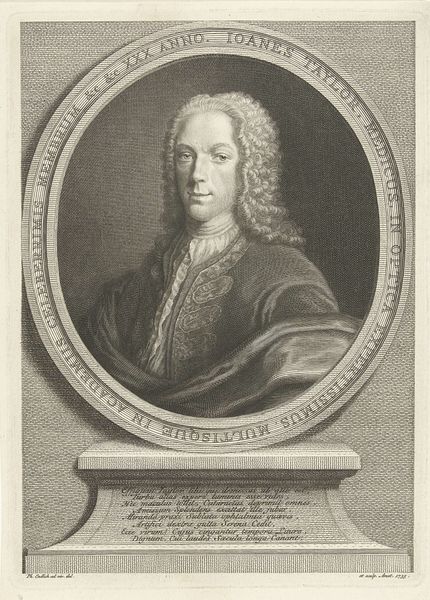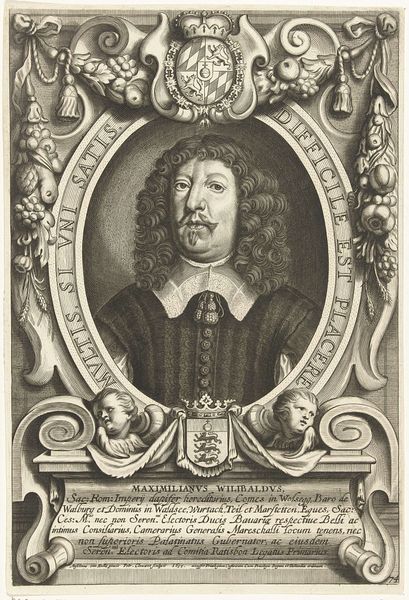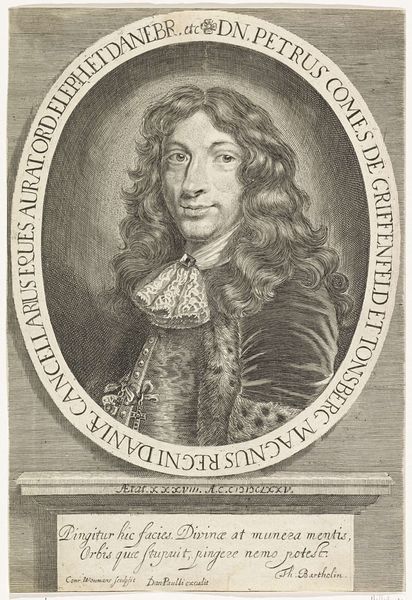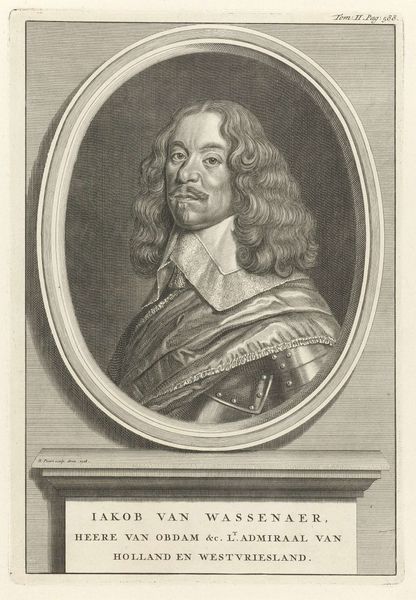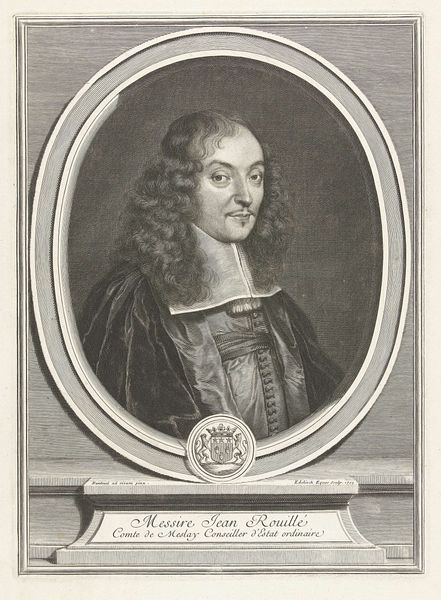
metal, engraving
#
portrait
#
baroque
#
metal
#
old engraving style
#
caricature
#
form
#
line
#
portrait drawing
#
history-painting
#
engraving
Dimensions: height 343 mm, width 252 mm
Copyright: Rijks Museum: Open Domain
Curator: This is a portrait of Mattias de Medici, rendered in engraving on metal, created somewhere between 1647 and 1696 by Adriaen Haelwegh. Editor: Ah, a gentleman captured in all his...metallic glory! There’s something oddly charming, almost comical, about how his features are so sharply defined. The engraving makes him look like a well-preserved caricature of a Renaissance action figure. Curator: The baroque style is evident in the intricate details – note the delicate lines that construct his armour and the ornate wreath surrounding the portrait. This isn’t just a simple representation; it’s about conveying power and status. We see a detailed approach to line work, indicative of the engraving process itself; this wasn't mass-produced. It's a crafted object meant for circulation amongst a select viewership. Editor: Power, maybe. I'm getting more of a "slightly bewildered" vibe. The lighting is doing peculiar things around his hairline, don't you think? But look closer; he is gripping his commander’s baton, hand resting casually atop his helmet, giving him a roguish sort of swagger. Still, a bit dazed behind the eyes, isn't he? Curator: What the engraving lacks in nuance of shading it more than makes up for with meticulously applied detail, from the depiction of textile textures to the individual rivets holding the armour together. Consider the labor involved! And then there's the social function of these types of portraits – propaganda meant for dissemination within a highly structured society. Editor: Propaganda! You materialists see everything as a tool. Perhaps. But even the best propaganda can be unintentionally hilarious in hindsight. This fellow reminds me of a slightly anxious Hamlet – all the power of state at his fingertips, but utterly unsure if he left the oven on. There’s a beautiful vulnerability there. Curator: Well, whatever emotions we project, Haelwegh created more than just an image. He constructed a symbol—of lineage, command, and the prevailing values of his time, which reminds us to think critically about the socio-political structures embedded in art of this era. Editor: And I’m left with this image, feeling strangely fond of this vaguely ridiculous yet undeniably powerful man. A reminder that history is made by wonderfully flawed characters, frozen for our bemusement in metal.
Comments
No comments
Be the first to comment and join the conversation on the ultimate creative platform.
